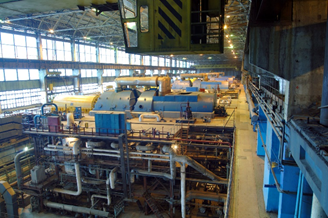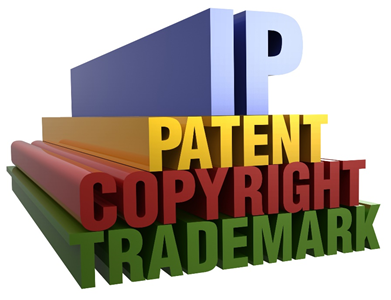What are long term assets?
Long-term assets are assets used in a company's manufacturing process and have a useful life exceeding twelve months. These assets are referred to as "fixed assets" because they account for a significant amount of the company's fixed cost of production.
Summary
- Long-term assets are assets used in a company's manufacturing process that have a useful life of more than a year.
- Some common long term assets are land, building, machinery, goodwill, long term investments etc.
- The book value of most of the long term assets is subject to deduction of depreciation.
Frequently Asked Questions
What are some of the long term tangible assets?
A few long term assets possessed by companies are discussed as follows-
Land and buildings- The purchase price of the land owned by a company is recorded in its balance sheet year on year. The item building is recorded in the balance sheet at its purchase price. However, its net book value changes year on year because of the depreciation amount deducted each year. Accumulated depreciation is the snow- balling amount of depreciation charged each year. The netbook value of a building is its historical price less the accumulated depreciation.
Equipment- Equipment like tools, computers, fax machines, phone instruments are all recorded under this head. The net value is estimated by deducting the accumulated depreciation of all the pieces of equipment together.

Steam Turbine, Machinery, Tubes At A Power Plant © Artfotoss | Megapixl.com
Furniture and fixtures- Pieces of portable equipment that are utilised to furnish an office setting are referred to as furniture and fixtures. Book racks, chairs, workstations, filing cabinets, storage units and tables are few furniture and fixtures. These items are also depreciated over their lifespan to arrive at the net book value.
Vehicles- Vehicles like cars, trucks, mopeds owned by the business are recorded under this head on the balance sheet. It is recorded at purchase price, including all expenses incurred to make the vehicle serviceable for the business. Then, net book value is estimated by deducting the accumulated depreciation.
Leasehold Improvements: On the asset side of the balance sheet, leasehold improvement records the improvements made in existing assets for adding value to them. Some examples of leasehold improvements include additions of lights and fixtures, tiling, partitioning for new rooms, setting up a factory on the land. The netbook value of the leasehold improvements is after the deduction of accumulated depreciation.
What are intangible assets, and how are they recorded?
Intangible assets, unlike tangible assets, do not have a physical form. There are two types of them: identifiable and non-identifiable.
Intangible assets that can be separated from the company like other physical assets and sold by the company are known as identifiable intangible assets. Intellectual property, patents, trademarks are examples of these assets. Patents are licenses issued by governments that allow the inventor of a product or service the exclusive right to create, use, and sell that product or service for a certain length of time; the expenses incurred for getting the patent are capitalised as an intangible asset. Similar to patents, copyrights are the costs incurred to obtain copyright permission from a government. However, since copyrights are issued for a limited period, the asset has to be expensed in line with the copyright expiry period. At times, the business also incurs huge expenses on obtaining licenses in the initial stages of incorporation. These are known as organisation costs and are capitalised as an asset given its long shelf life.

© Michaeldb | Megapixl.com
Intangible assets that are always tagged along with the company and cannot be separated are non-identifiable intangible assets. Goodwill is the most prevalent non- identifiable intangible asset. It must be noted that goodwill is only acquired through acquisitions and is not created by the company. When a company makes an acquisition, it might have to pay a higher amount than the net value of the tangible assets acquired. This difference is recorded as goodwill on the balance sheet to reflect a company's superior reputation, solid customer base, brand recall. This asset is not depreciated; instead, if the firm assesses in its annual valuation that the goodwill's worth has declined from its reported book value, it will record an impairment loss.
Amortisation is the term used for expensing an intangible asset. The concept works similar to the depreciation on tangible assets discussed earlier. These assets, too, are depreciated year on year. The straight-line expense approach is commonly used to amortise intangible assets. However, goodwill, although an intangible asset. It is not amortised.
What are the financial assets that a firm may hold?
Financial assets are intangible assets. Financial assets are in the forms of contracts wherein the firm holds the right to receive income at regular intervals in the form of interest or dividends and the principal repayment at the instrument's maturity. The returns on such assets may be fixed or may fluctuate depending on the market cycle, seasonality, interest rate, government policies etc. Firms hold long term financial assets in the form of bonds, shares in other companies, long term debts extended, bank deposits etc.
What is the difference between current assets and long term assets?
While recording the balance sheet, a company's assets are classified into current assets and long-term assets. Cash and everything else that can be used up or converted to cash in the next one year are considered current assets. Any asset that is held for more than a year is a long-term asset.
Current assets are utilised to make day-to-day operations, while long term assets are investments made for the long term existence and survival of the business. Therefore, long term assets are also key factors in deciding the prospects of growth and expansion.
Depreciation divides a company's cost for long term assets to expense them over their useful life, and it is applied to fixed assets. Because their lifespan is not exceeding twelve months, current assets are not depreciated.
If a company requires cash quickly, it can sell current assets, but long term assets that are higher in financial value cannot be liquidated that easily.
Current assets include bills, receivables, cash, prepaid expenses and marketable securities that can be easily liquidated. On the other hand, long-term assets include long-term investments in bonds, factories, land, plant and machinery, goodwill, etc.
 Please wait processing your request...
Please wait processing your request...